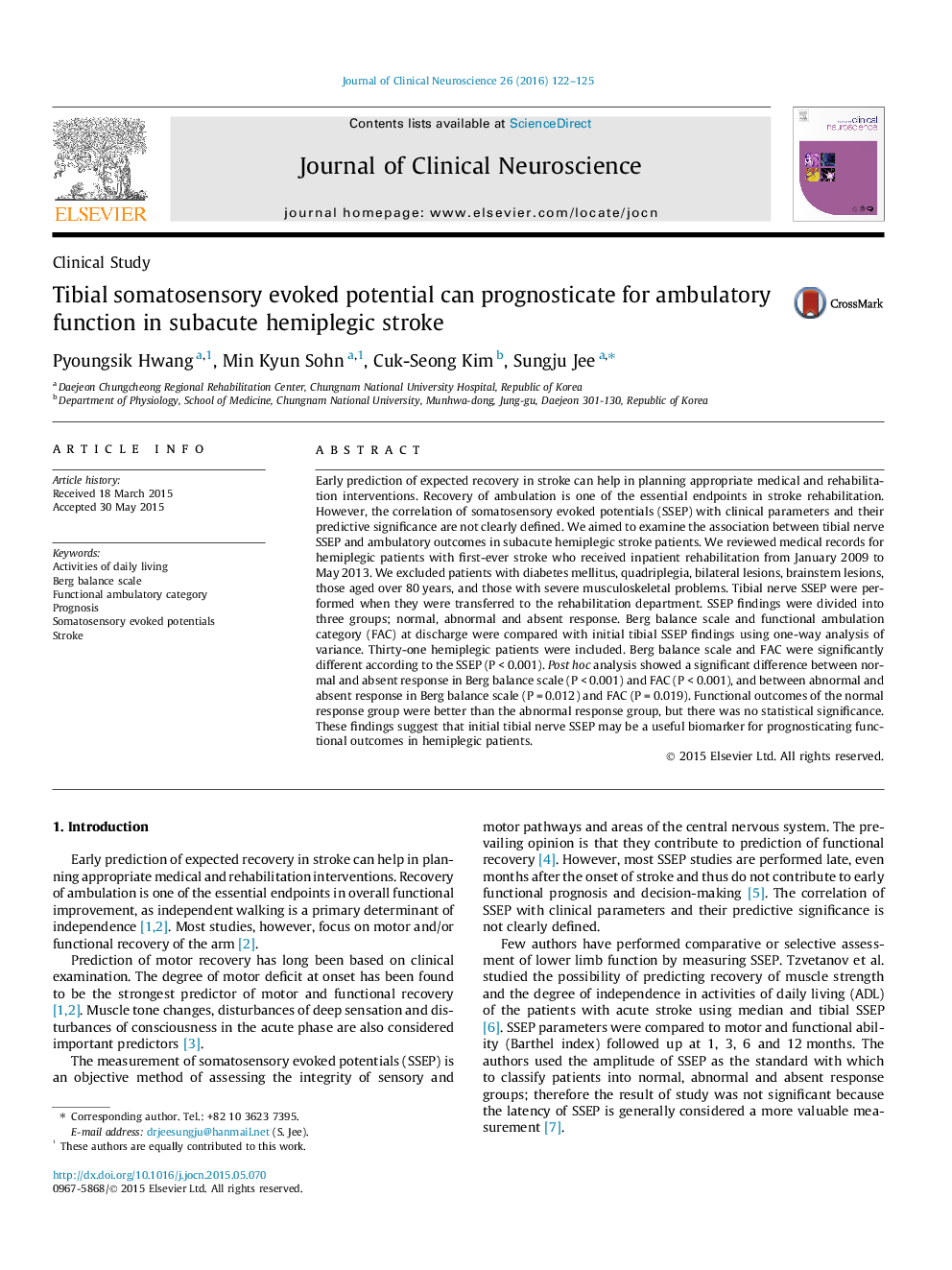| کد مقاله | کد نشریه | سال انتشار | مقاله انگلیسی | نسخه تمام متن |
|---|---|---|---|---|
| 3058298 | 1580290 | 2016 | 4 صفحه PDF | دانلود رایگان |
• Somatosensory evoked potential (SEP) from lower extremity can be useful to prognosticate ambulatory recovery.
• There were simultaneous changes in both balance and gait function.
Early prediction of expected recovery in stroke can help in planning appropriate medical and rehabilitation interventions. Recovery of ambulation is one of the essential endpoints in stroke rehabilitation. However, the correlation of somatosensory evoked potentials (SSEP) with clinical parameters and their predictive significance are not clearly defined. We aimed to examine the association between tibial nerve SSEP and ambulatory outcomes in subacute hemiplegic stroke patients. We reviewed medical records for hemiplegic patients with first-ever stroke who received inpatient rehabilitation from January 2009 to May 2013. We excluded patients with diabetes mellitus, quadriplegia, bilateral lesions, brainstem lesions, those aged over 80 years, and those with severe musculoskeletal problems. Tibial nerve SSEP were performed when they were transferred to the rehabilitation department. SSEP findings were divided into three groups; normal, abnormal and absent response. Berg balance scale and functional ambulation category (FAC) at discharge were compared with initial tibial SSEP findings using one-way analysis of variance. Thirty-one hemiplegic patients were included. Berg balance scale and FAC were significantly different according to the SSEP (P < 0.001). Post hoc analysis showed a significant difference between normal and absent response in Berg balance scale (P < 0.001) and FAC (P < 0.001), and between abnormal and absent response in Berg balance scale (P = 0.012) and FAC (P = 0.019). Functional outcomes of the normal response group were better than the abnormal response group, but there was no statistical significance. These findings suggest that initial tibial nerve SSEP may be a useful biomarker for prognosticating functional outcomes in hemiplegic patients.
Journal: Journal of Clinical Neuroscience - Volume 26, April 2016, Pages 122–125
